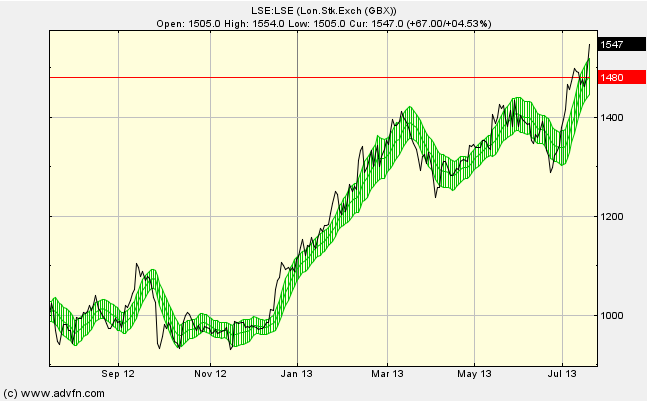Keltner Bands/Channels are a volatility indicator, similar to Bollinger Bands. Keltner bands are bands set each side of a Simple Moving Average (SMA) (period adjustable under 'edit'), they are calculated by multiplying the SMA by a certain number (whether this be 1.5, 2 etc).
Parameters: Period.
For additional help on what the different parameters mean, that isn't included on this page, click here.
Keltner Bands

Here is an example of the Keltner Bands chart study (on a London Stock Exchange graph)
When the price line crosses either the upper or the lower bands, then this can sometimes indicate a buy or sell signal. If the price is above the upper band then this is usually an indication that the price is on the up, and vice versa. Consequently, if the upper band is crossed from above, then this can be an indication that the price is going to start falling. Conversely, if the lower band is crossed from above, then this can be an indication that the price is going to start falling.
There is no reason why the Keltner Bands cannot be interpreted the same way as some of the other bands/channels that we use, such as the Bollinger Bands.
Reading the study: Keltner Bands

Here is an example of a the Keltner Bands with the price line (of the London Stock Exchange), and what it may indicate

It looks like you are not logged in. Click the button below to log in and keep track of your recent history.
Support: +44 (0) 203 8794 460 | support@advfn.com
By accessing the services available at ADVFN you are agreeing to be bound by ADVFN's Terms & Conditions